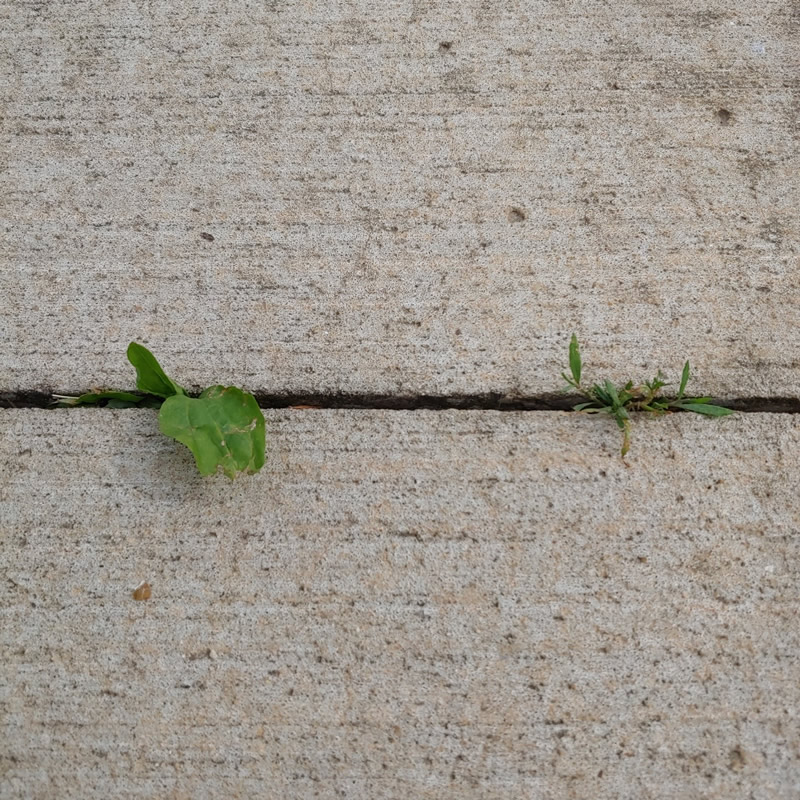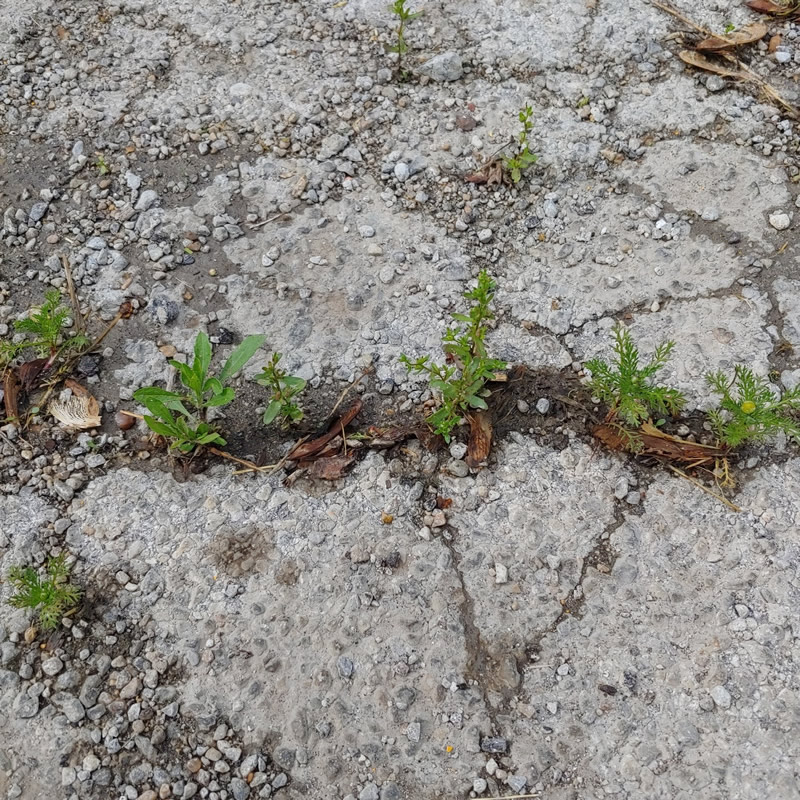Issue 4, June 1, 2020
Controlling Weeds in the Driveway
Summer is finally upon us. Perhaps you spent the holiday weekend getting the lawn and landscape beds in tiptop shape. Then you noticed the weeds creeping up in the driveway and sidewalk cracks. What can be done in those areas?
If covering them with more rock or asphalt are not options, then you are left with mechanical means and herbicides. Weeds can be removed by hand, which depending upon the degree of infestation can be quite time consuming. Of course, a small number of random weeds can be easily controlled by hand. For best results with hand pulling, wait until after the soil is moist from a recent rain event. Tools such as dandelion forks, winged weeders, and hoes can make larger areas easier to tackle. String trimmers and mowers can be utilized to keep weed height down. For weeds growing in cracks, an old knife can come in handy. Be sure to use extreme caution when using sharp equipment. Emergency room trips only delay the inevitable. I have personal experience with this. While walking beans as a teenager, I accidentally cut my leg with a long handled, sharp weed hook. Four stitches later, I found myself right back in the bean field per my father’s instructions. The weeds were there waiting, but I digress.

Weeds in a sidewalk crack waiting to meet an old knife. Credit: Michelle Wiesbrook
Herbicides are also an option for driveway and other gravel areas where total vegetation control is needed. Nonselective herbicides such as glyphosate or glufosinate can be used to kill weeds present at the time of application but these. Unfortunately, these two products do not provide any residual control. Herbicides such as soil sterilants can be used to provide long lasting control and some products will prevent new weed growth for many months. However, some products are soil mobile and caution must be used. Be sure to read and follow all labels carefully. Check to see that the product may be legally applied to your specific area (driveways, sidewalks, patios, gravel areas, etc.). Keep in mind too that efficacy is typically weather and weed species dependent. Check to see that your dominant weed species are listed on the label. Warm, wet seasons may result in quicker degradation of the application than what the label promises in terms of length of control. Finally, not all products will kill existing weeds but rather prevent new weeds from emerging. Again, carefully read and follow labels!

Prostrate knotweed, speedwell, and pineapple weed have made themselves at home in this driveway. Credit: Michelle Wiesbrook
Many products are available but selection may be limited by what your garden supply center or other supplier has on the shelf. One possible option is dichlobenil, which kills certain existing weeds and prevents new weeds from emerging for several months in “recreational areas” and “industrial areas” according to one label I found. Typically you would apply it in late fall to early spring, before most summer annual weeds emerge.
Alternatively, there are combination products available that offer control for 4 months up to a year. Many contain glyphosate, which will control a broad spectrum of weeds, and another herbicide that will provide residual control or even quicker kill. Such herbicides include imazapyr, imazapic, diquat, fluazifop, oxyflurofen, and indaziflam. Additionally, 2,4-D and dicamba based products are available too. Commercial applicators licensed in Rights-of-Way, may have access to additional products.

A driveway full of weeds. Credit: Michelle Wiesbrook
You will find that many of these product trade names have words like “Extended” & “Year-long.” The intent of these products should be clearly labeled on the front panel of the label. These products are NOT for garden use and misapplication into those areas can cause damage to desirable plants. All too often, I hear about the well-meaning gardener or even professional who accidentally grabbed the wrong jug of herbicide. Soil sterilants misapplied to landscape beds or vegetable gardens can lead to long lasting damage and can prohibit planting into these areas for months. If storing these products separately from other herbicides is impractical, consider writing an obvious note to yourself on the jug handle with a permanent marker. This can help perhaps prevent mishaps.
Author:
Michelle Wiesbrook